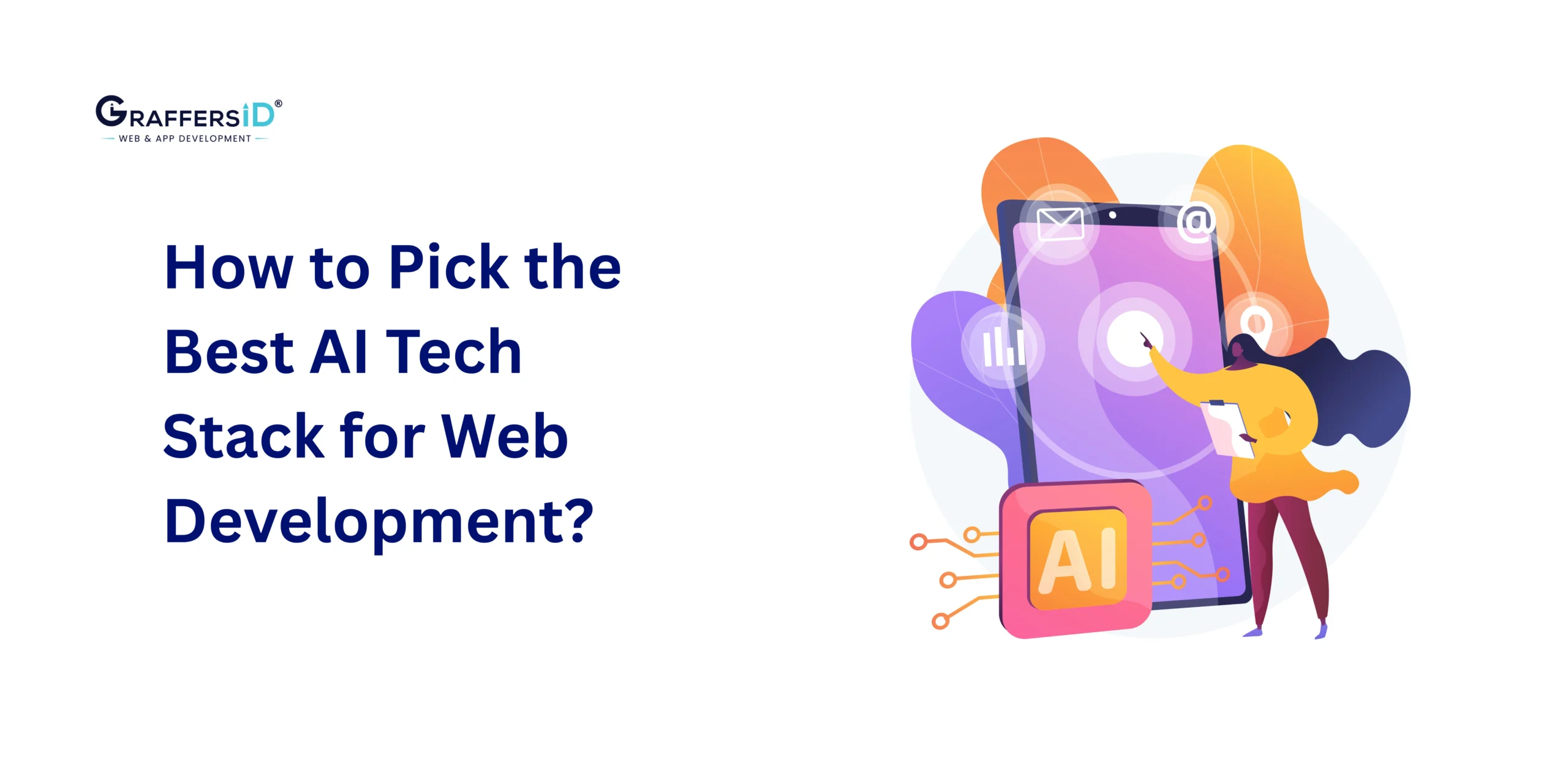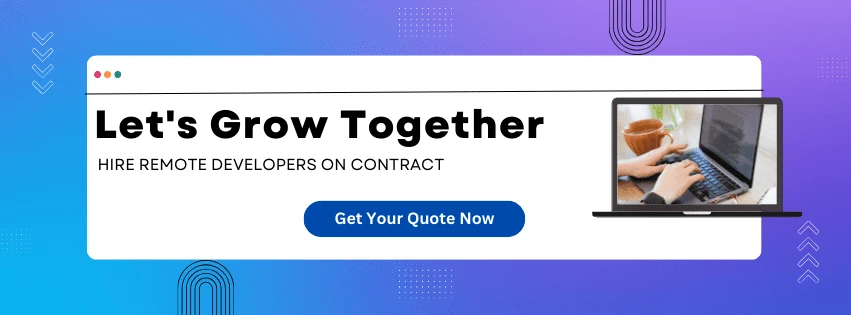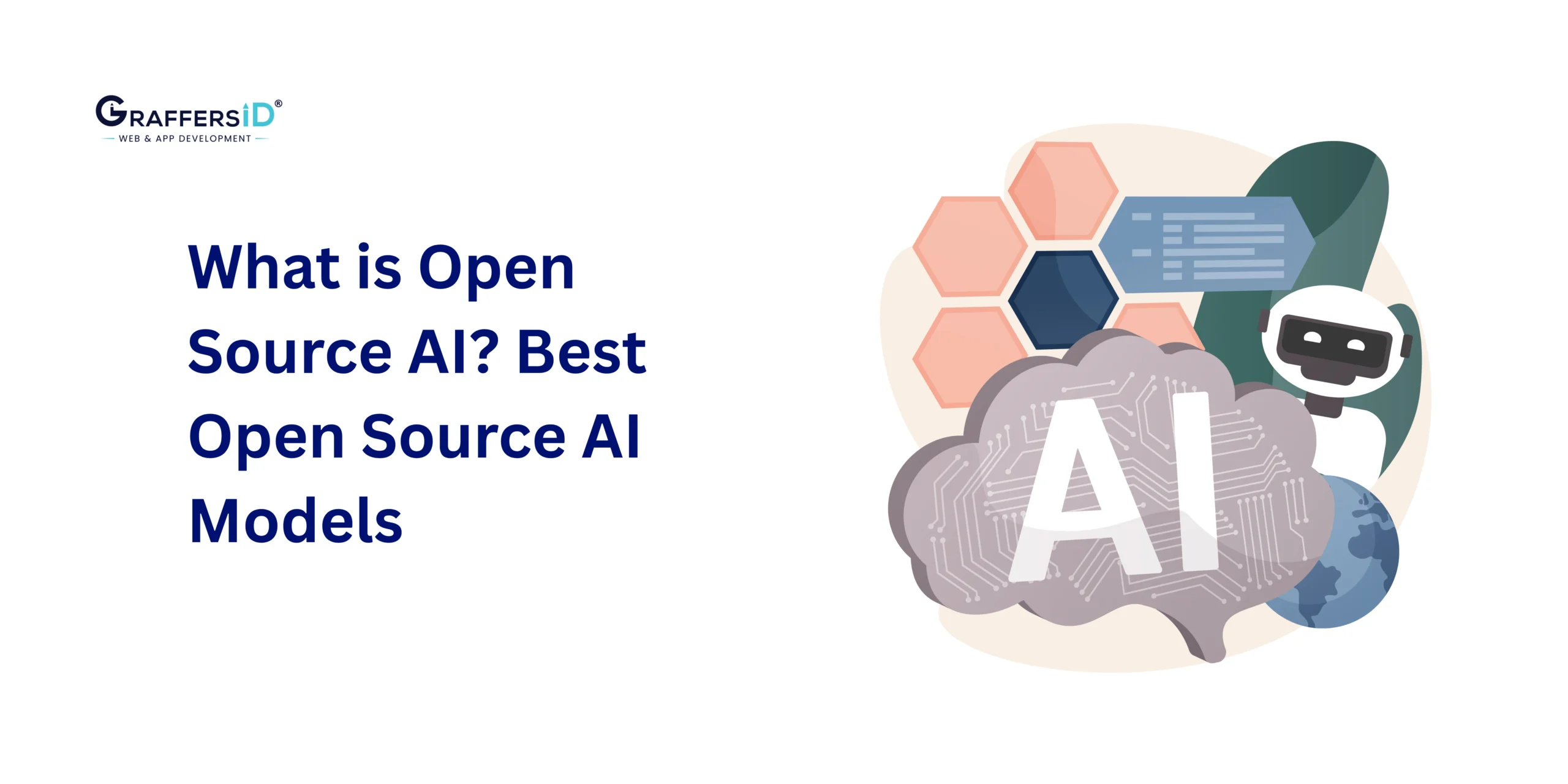In 2026, nearly every high-performance web application relies on AI, whether for personalization, automation, decision-making, customer support, analytics, or content generation.
It’s the engine powering modern digital experiences. But here’s the truth most teams overlook: Your AI is only as strong as the tech stack behind it.
Choosing the right AI stack can be the difference between an app that’s fast, scalable, and cost-efficient and one that becomes slow, expensive, and impossible to maintain.
Choosing the right AI technology stack ensures:
-
Lightning-fast development and deployment
-
Real-time processing
-
Higher model accuracy and reliability
-
Lower infrastructure and inference costs
-
Enterprise-grade security and compliance
-
A scalable architecture that grows with your business
If you’re planning to build AI into your product or scale an existing AI system, this 2026 guide will help you choose the tools, frameworks, and technologies that will set your AI-powered apps up for long-term success.
Key Features Every Modern Web Application Should Have in 2026
AI in 2026 drives smarter, more adaptive, and real-time digital experiences. The world’s fastest-growing web platforms rely on these core AI capabilities to improve efficiency, personalization, and decision-making.
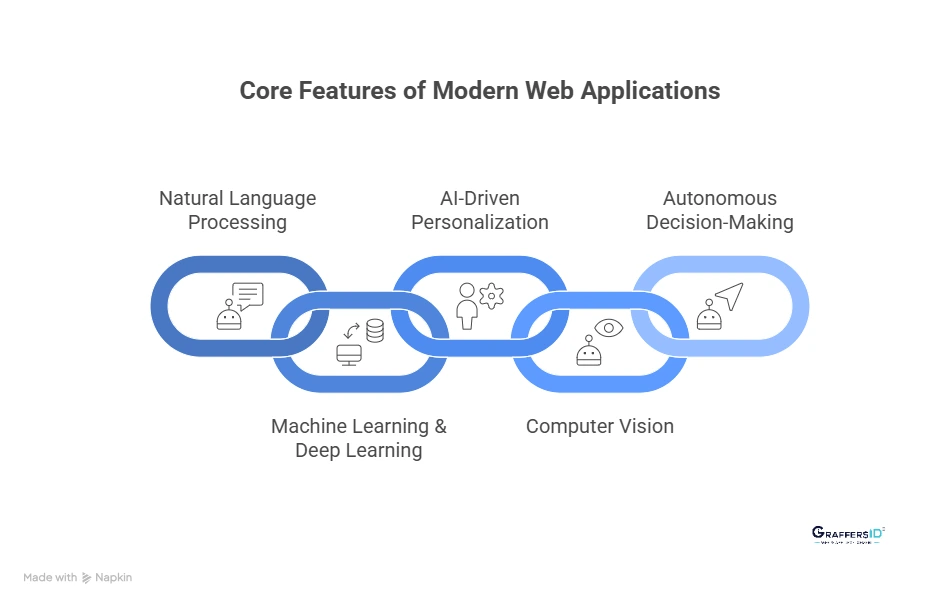
1. Natural Language Processing (NLP)
NLP powers smooth text and voice interactions, from AI chatbots to smart search to voice assistants. With advanced models like GPT-5, Llama 3/4, Claude, Dialogflow CX, and Hugging Face Transformers, web apps now deliver human-like conversations, quick resolutions, and hyper-personalized content at scale.
2. Machine Learning & Deep Learning
ML/DL models drive recommendations, fraud detection, predictive analytics, and automated decision-making. Frameworks such as PyTorch 3.x, TensorFlow 3.x, Scikit-learn, and JAX enable faster training, higher accuracy, and real-time inference, allowing apps to adapt continuously based on user behavior.
3. AI-Driven Personalization
Personalization has evolved from simple rules to dynamic, behavior-aware engines. Using TensorFlow.js, server-side models, and edge inference, web apps now customize content, dashboards, and UI layouts in milliseconds, maximizing engagement and retention.
4. Computer Vision
Computer vision now powers identity verification, AR/VR, surveillance, and image-based search. Tools like OpenCV, YOLOv9, MediaPipe, and ViT enable instant image/video processing, real-time object detection, gesture recognition, and face scanning, enhancing security and user experience.
5. Autonomous Decision-Making
Modern apps use reinforcement learning and hybrid AI models to make real-time decisions, optimizing pricing, moderating content, routing requests, or automating workflows. This ensures faster operations, reduced human effort, and consistent outcomes.
Read More: How to Build an AI Agent in 2026: A Strategic Guide for CTOs and Tech Leaders
Key Factors to Evaluate When Selecting an AI Tech Stack in 2026
Choosing the right AI tech stack is critical for building fast, scalable, and cost-efficient web applications in 2026. Below are the essential factors every CTO and product leader should evaluate before committing to an AI architecture.
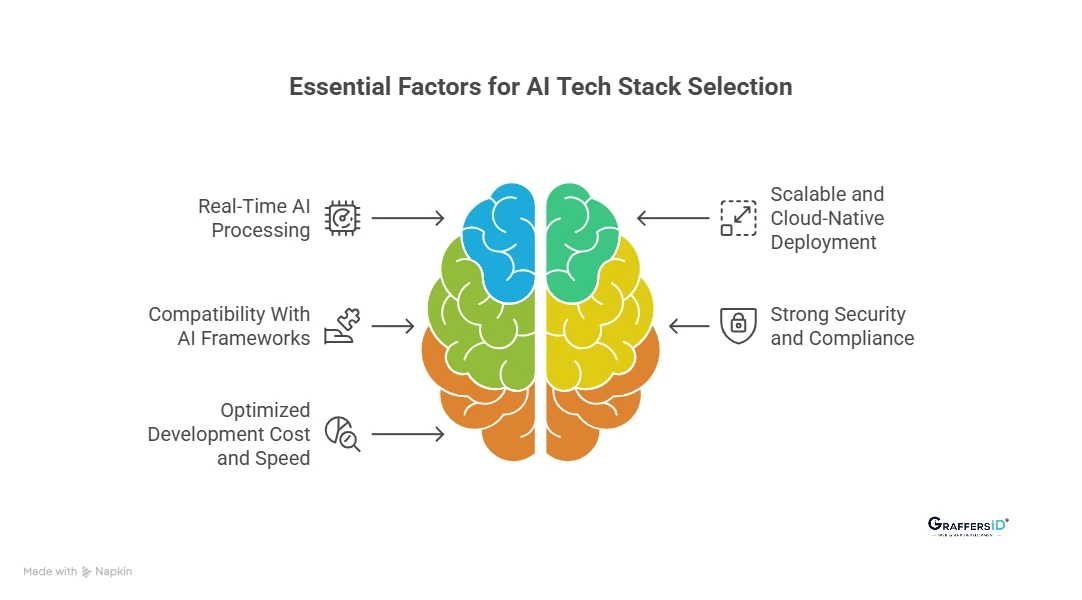
1. Real-Time AI Processing Capabilities
Modern AI products: chatbots, AI copilots, fraud detection, live analytics- depend on low-latency inference. Your stack should support instant data flow using technologies like Kafka, Redis Streams, RabbitMQ, WebSockets, and Temporal.io. In 2026, real-time AI is no longer a feature; it’s the baseline for intelligent, event-driven experiences.
2. Scalable and Cloud-Native AI Deployment
AI workloads scale rapidly as user traffic and model complexity grow. Your stack must support distributed inference, horizontal scaling, and containerized deployments. Platforms such as AWS SageMaker, Google Cloud Vertex AI, Azure OpenAI, and Cloudflare Workers AI ensure auto-scaling and high availability, keeping apps responsive even at peak load.
3. Compatibility With Leading AI Frameworks
Your backend must smoothly integrate with modern AI frameworks like TensorFlow, PyTorch, Hugging Face Transformers, ONNX Runtime, and MLflow. Strong compatibility reduces engineering friction, accelerates deployment, and ensures smooth model updates throughout your product lifecycle.
4. Strong Security, Privacy, and Compliance Controls
AI applications must adhere to evolving compliance standards like GDPR, CCPA, HIPAA, and 2026 AI governance frameworks. Tools such as EvidentlyAI, Guardrails AI, and IBM AI Governance help track model drift, reduce bias, enforce explainability, and maintain ethical, secure AI operations, protecting both users and the business.
5. Optimized Development Cost and Speed
The best AI stacks minimize development time and infrastructure cost through pre-trained LLMs, serverless inference, AutoML, and managed AI platforms. Solutions like SageMaker, Vertex AI, and Hugging Face Inference Endpoints help teams experiment faster, deploy quickly, and scale efficiently without heavy engineering overhead.
Best AI Tech Stack for Web Development in 2026 (Complete Guide)

A. Best Frontend Frameworks for AI Web Development (2026)
1. React 19
React 19 is the top choice for AI-powered interfaces due to its Server Components and improved concurrency. It supports smooth integration of AI chatbots, smart UI components, and edge-based AI inference for faster user experiences.
2. Vue 4
Vue 4 remains lightweight and highly flexible, making it ideal for teams building fast AI-enabled frontends. Its strong compatibility with TensorFlow.js makes in-browser machine learning tasks smoother and more efficient.
3. Svelte 5
Svelte 5 compiles to highly optimized vanilla JavaScript, enabling ultra-fast rendering for AI dashboards and analytics tools. Its low-latency performance is perfect for real-time AI interfaces and data-heavy UI updates.
B. Best Backend Frameworks for AI Web Applications (2026)
1. Node.js (Fastify + TypeScript)
Node.js with Fastify and TypeScript delivers high-speed APIs for real-time AI interactions. Its event-driven architecture makes it ideal for chatbots, streaming AI responses, and live analytics.
2. Python (Django, FastAPI)
Python remains the strongest backend ecosystem for AI development due to native support for machine learning libraries. Django provides structure and security, while FastAPI offers lightning-fast API responses ideal for AI inference.
3. Go & Rust Backends
Go and Rust are chosen for AI workloads that require extreme performance and low-latency inference. They are ideal for building scalable microservices, edge AI deployments, and GPU-accelerated platforms.
C. Best Programming Languages for AI Web Development (2026)
1. Python
Python continues to lead AI development with frameworks like TensorFlow, PyTorch, Scikit-learn, and Hugging Face. It’s the preferred language for training, deploying, and optimizing machine learning models.
2. JavaScript / TypeScript
JavaScript and TypeScript are essential for frontend AI interactions, serverless AI functions, and browser-based inference. They integrate easily with TensorFlow.js and modern LLM-based UI components.
3. Rust
Rust is rapidly growing as the top choice for high-performance AI applications. It’s ideal for GPU-enabled inference, security-critical systems, and ultra-fast edge deployments.
D. Best AI Frameworks & Libraries for Web Apps (2026)
1. PyTorch 3.x
PyTorch 3.x is the industry standard for deep learning due to its flexibility, faster training speed, and production-ready deployment tools.
2. TensorFlow.js
TensorFlow.js enables machine learning directly in the browser, reducing latency and improving privacy by keeping inference on the client side.
3. Hugging Face Transformers
Hugging Face powers modern LLMs, NLP pipelines, and multimodal AI. It’s widely used for chatbots, summarization, content generation, and retrieval-augmented applications.
4. LangChain + LangGraph
LangChain and LangGraph enable AI agent workflows, multi-step reasoning, and retrieval pipelines, critical for enterprise-grade AI automation.
5. OpenCV
OpenCV remains the most reliable library for computer vision tasks such as image detection, face recognition, and object tracking in web apps.
6. JAX
JAX offers high-performance gradient computation and is used for large-scale ML research, scientific computing, and super-fast model training.
E. Best Cloud Platforms & Databases for AI Scalability (2026)
Cloud Platforms:
1. Google Cloud Vertex AI
Vertex AI provides an end-to-end platform for model training, tuning, deployment, and monitoring. It’s ideal for teams handling large-scale enterprise AI workloads.
2. AWS SageMaker
SageMaker offers managed training, serverless inference, and built-in MLOps pipelines. It simplifies scaling AI models across distributed architectures.
3. Azure AI Studio
Azure AI Studio is popular among enterprises for its secure AI deployment workflows, responsible AI controls, and strong integration with Microsoft ecosystems.
4. Cloudflare Workers AI
Workers AI enables ultra-low-latency inference at the edge, making it perfect for global LLM apps, chatbots, and real-time AI interfaces.
Databases:
1. MongoDB Atlas
MongoDB Atlas offers flexible, schema-less storage suitable for AI-driven applications with dynamic datasets. It supports vector indexing for hybrid AI search.
2. PostgreSQL + pgvector
PostgreSQL with pgvector is one of the best options for storing embeddings, enabling semantic search, similarity search, and RAG pipelines.
3. Pinecone / Weaviate
Pinecone and Weaviate are leading vector databases optimized for LLM-based search, RAG systems, and AI applications that require fast vector indexing.
A well-balanced AI Tech Stack for Web Development in 2026 includes:
| Category | Technologies |
| Frontend | React.js, Vue.js, Svelte |
| Backend | Node.js (Fastify + TypeScript), Python (Django/FastAPI), Go, Rust |
| Languages | Python, JavaScript, TypeScript, Rust |
| AI Frameworks & Libraries | PyTorch 3.x, TensorFlow.js, ONNX Runtime, Hugging Face Transformers, LangChain/LangGraph, OpenCV, JAX |
| Cloud Solutions | Google Cloud Vertex AI, AWS SageMaker, Azure AI Studio, Cloudflare Workers AI |
| Databases | MongoDB Atlas, PostgreSQL + pgvector, Pinecone, Weaviate |
Common Use Cases of AI Web Applications in 2026

1. E-Commerce
-
AI delivers hyper-personalized product recommendations based on real-time user behavior and intent.
-
Dynamic pricing engines use AI to adjust prices for better conversions and profitability.
-
AR + computer vision enable virtual try-on experiences for apparel, accessories, and cosmetics.
-
AI chatbots and assistants automate customer support across the entire buying journey.
2. Healthcare
-
AI-powered image diagnostics help clinicians detect diseases faster with higher accuracy.
-
Predictive analytics models forecast patient risks and treatment outcomes.
-
Voice-to-text AI tools automate clinical documentation for doctors.
3. Finance
-
AI fraud detection systems analyze transactions in real time to block suspicious activity.
-
AI-driven risk scoring improves credit assessments and underwriting decisions.
-
Automated trading bots use predictive AI models for smarter investment decisions.
4. EdTech
-
AI teaching assistants provide personalized guidance and instant doubt resolution.
-
Adaptive learning engines adjust lessons based on each student’s behavior and performance.
-
Computer vision enables automated remote proctoring and exam monitoring.
Read More: 5 Best AI Frameworks and Libraries in 2026 Trusted by Leading Tech Companies
Best Practices to Build High-Performance AI Web Apps in 2026
To create fast, scalable, and secure AI-powered web applications in 2026, development teams should follow these essential best practices:
1. Choose an AI Tech Stack That Supports Long-Term Scalability:
Evaluate your project’s complexity, expected traffic, data volume, and AI model requirements to ensure the stack can scale without performance bottlenecks.
2. Optimize AI Models for Faster Inference:
Use model compression techniques like pruning, quantization, distillation, and ONNX Runtime to reduce latency and improve real-time performance across devices and browsers.
3. Improve Web App Speed and Frontend Performance:
Enable lazy loading, use CDN-based asset delivery, implement advanced caching, and optimize database queries to ensure your AI web app loads instantly, especially under heavy traffic.
4. Strengthen AI Model Security and Compliance:
Secure APIs with authentication, encrypt sensitive data, detect model bias early, and use real-time monitoring to prevent model drift, malicious inputs, and unauthorized access.
5. Adopt MLOps for Continuous Deployment and Monitoring:
Implement automated pipelines for model training, validation, deployment, and continuous monitoring to maintain accuracy, reliability, and consistent performance at scale.
Conclusion: The Future of Web Development Is AI-First
By 2026, AI has become the foundation of modern web applications, powering personalized user journeys, automated decision-making, predictive analytics, and real-time digital experiences. The success of any AI-driven product now depends on selecting a future-ready AI tech stack that delivers speed, accuracy, security, and long-term scalability.
Choosing the right combination of technologies, such as React or Next.js for the frontend, Node.js or Django/FastAPI for the backend, PyTorch, Transformers, or ONNX for AI models, and platforms like Google Vertex AI, AWS SageMaker, or Azure AI, helps businesses build web applications that are faster, smarter, and more efficient than ever.
Companies that invest in the right AI stack today will lead the digital landscape tomorrow. If you’re ready to build or scale an AI-powered web application, GraffersID provides expert AI developers, frontend engineers, backend developers, and full-stack teams who specialize in creating high-performance, production-ready AI solutions.
Ready to build a modern, scalable AI-native web application?
Connect with GraffersID and bring your AI vision to life!
